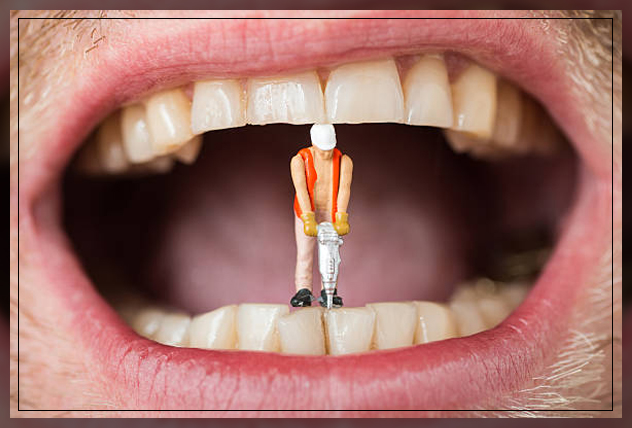What is Calculus Bridge? Its Types, Causes, Effects, Prevention, and Treatment

Calculus bridge, the term itself sounds overwhelming and intimidating! For many students of mathematics or engineering, this can be a stumbling block that prevents them from moving forward in their studies. But fear not! In this blog post, we will delve into what calculus bridge is all about – its types, causes, effects, prevention strategies and treatment options. Whether you are struggling with calculus bridge yourself or simply curious to learn more about it – read on! We’ve got you covered.
What is Calculus Bridge?
The Calculus Bridge is a math program that helps students learn calculus. It has three types: online, on-screen, and software. On-screen Calculus Bridge is a software program that is used in classrooms. Online Calculus Bridge is a website that students use to learn calculus.
Types of Calculus Bridges
There are many types of calculus bridges, each with its own specific effects and prevention. Here are the four main types:
1. Integral calculus bridges: These involve integrating different functions over a certain interval. They can be used to solve problems in physics, engineering, and other fields that require integrative techniques.
2. Differential calculus bridges: These involve solving differential equations or inequalities. They can be used in fields like physics, engineering, economics, and finance to solve problems quickly and accurately.
3. Applied calculus bridges: These are used in real-world situations where the underlying problem is not solved by one of the other two types of calculus bridges. They may involve things like optimization or control theory.
4. Meta-calculus bridges: This is a branch of mathematics that deals with connections between different branches of mathematics. It is still being developed, so there is not yet a full understanding of all its features and applications.
Causes of Calculus Bridges
Understanding calculus bridges can help you prevent them and get the most out of treatment. There are three types of calculus bridges: local, global, and partial. Local bridges are those that only affect one point in a curve while global bridges affect more than one point. Partial bridges are those that only affect a certain area around a point.
The causes of calculus bridges depend on the type of bridge. Local bridges are usually caused by something tipping or “loading” the body below the joint causing it to collapse or buckle. This can be due to aging, arthritis, surgery, or even obesity. Global bridges occur when two curves intersect at an angle and one curve tries to push the other curve out of its way. This can happen when two people grab each other too tightly during a game of tug-of-war or when two cars collide. Partial bridges can also be caused by pressure from different parts of the body pushing on other areas, as well as overuse or misuse of muscles.
There are several things you can do to prevent calculus bridges from happening in the first place: stay healthy and avoid weight gain; exercise regularly; maintain good posture; and avoid activities that put extra pressure on your joints (like playing contact sports). If you experience pain or stiffness in your joints, see your doctor for an evaluation. He or she may be able to prescribe medication or recommend exercises to help reduce pain and improve mobility. If you have a local bridge, your doctor may
Effects of Calculus Bridges
Calculus bridges are a type of mathematics problem that involve solving for the unknown quantities in two linear equations. They’re often used in physics, engineering, and business courses, and can be really helpful when trying to understand complicated mathematical problems.
There are many different types of calculus bridges, but they all share some common features. The first equation is usually a function that takes on different values at different points in space or time, while the second equation is a set of constraints that define how the function changes over those points. Once you know the values for the unknowns in both equations, solving them can give you information about how the function behaves.
Calculus bridges can have a bunch of different effects depending on what you’re trying to find out. Sometimes you just want to know the value of an unknown variable, while other times you might need to find an equation that minimizes some metric or satisfies some constraint. Anytime you’re working with calculus bridges, it’s important to be careful not to make any mistakes – messing up your calculations could lead to serious consequences!
Prevention and treatment of calculus bridges
Now that we know a little bit about what calculus bridges are and what their effects can be, it’s time to talk about prevention and treatment. Prevention involves keeping your math skills up-to-date and practicing regularly so you won’t get stuck when faced with a calculus bridge problem. Treatment involves finding a solution if something goes
Prevention and Treatment of Calculus Bridges
Calculus bridges are a type of calculus problem that occur when two curves intersect. They can be caused by incorrect use of derivatives or integrals, or by faulty mathematical reasoning.
There are three types of calculus bridges: geometric, algebraic, and analytic. Geometric calculus bridges occur when two intersecting curves share the same point but have different shapes. Algebraic calculus bridges involve solving an equation for the points on each curve. Analytic calculus bridges require finding the derivative or integral at a specific point.
To prevent calculus bridges, it is important to understand how they work and why they occur. Additionally, proper methods for solving these problems must be used. Treatment options vary depending on the cause of the bridge, but generally involve using derivatives or integrals to solve equations or find limits.



